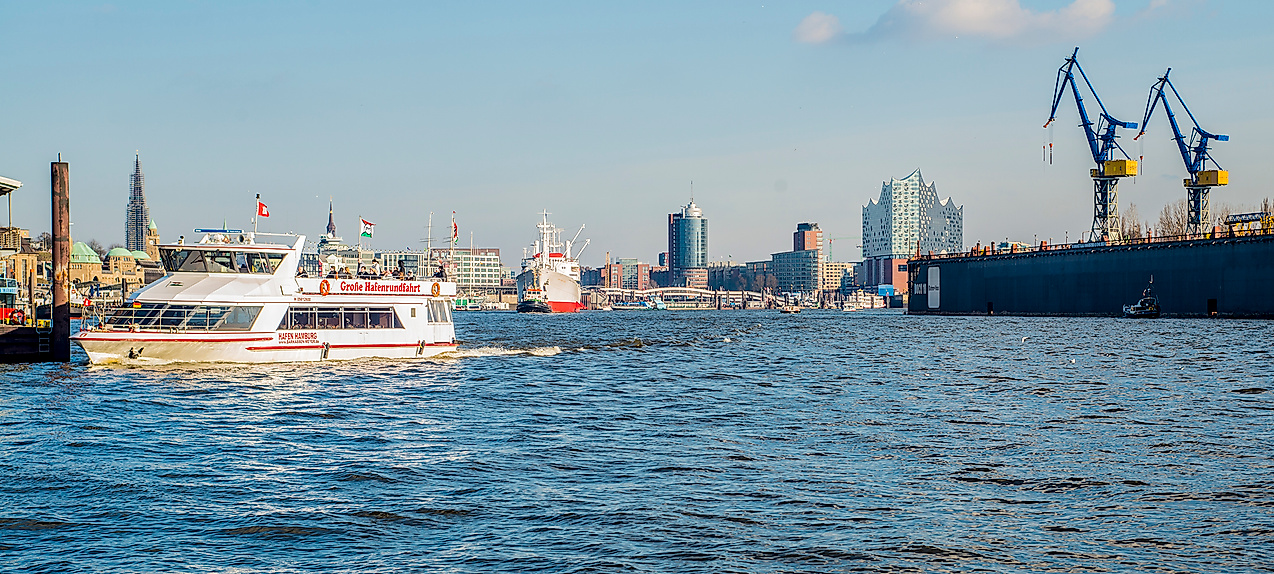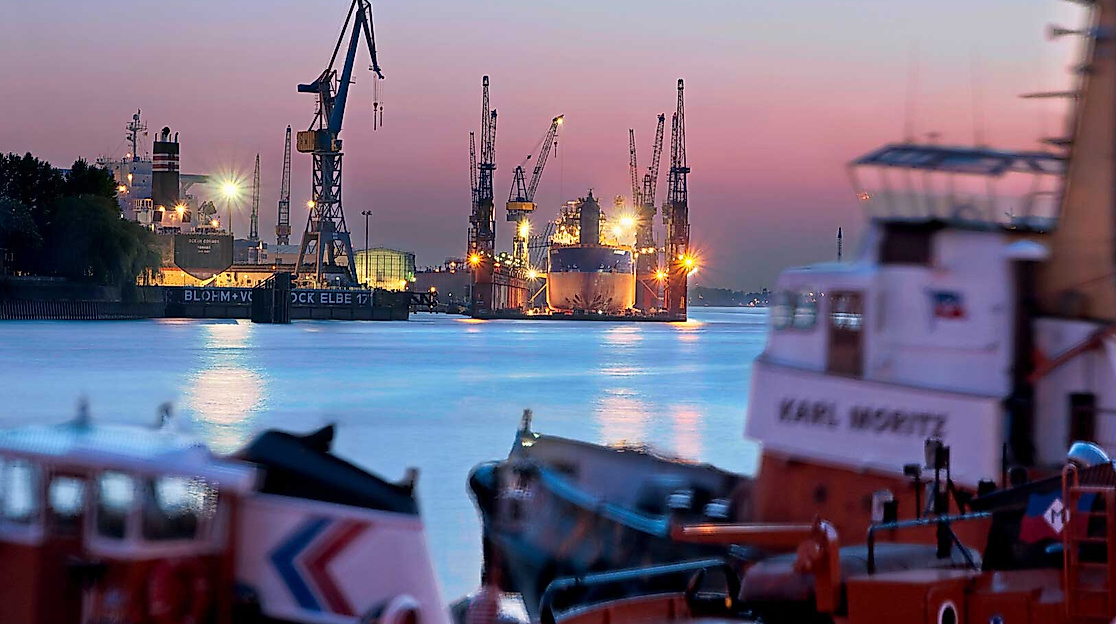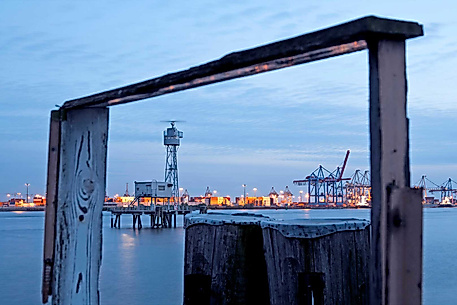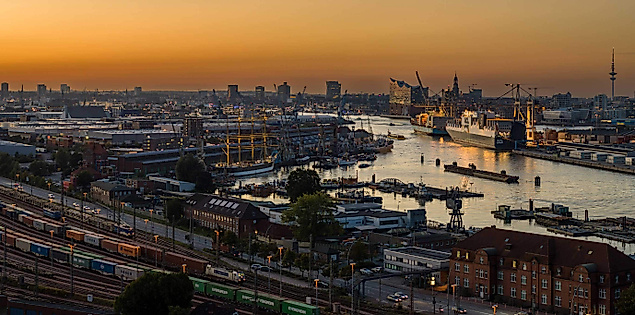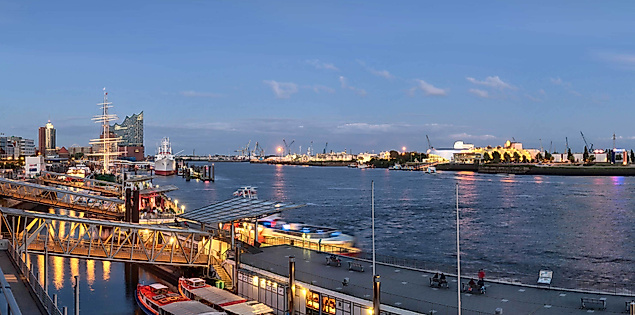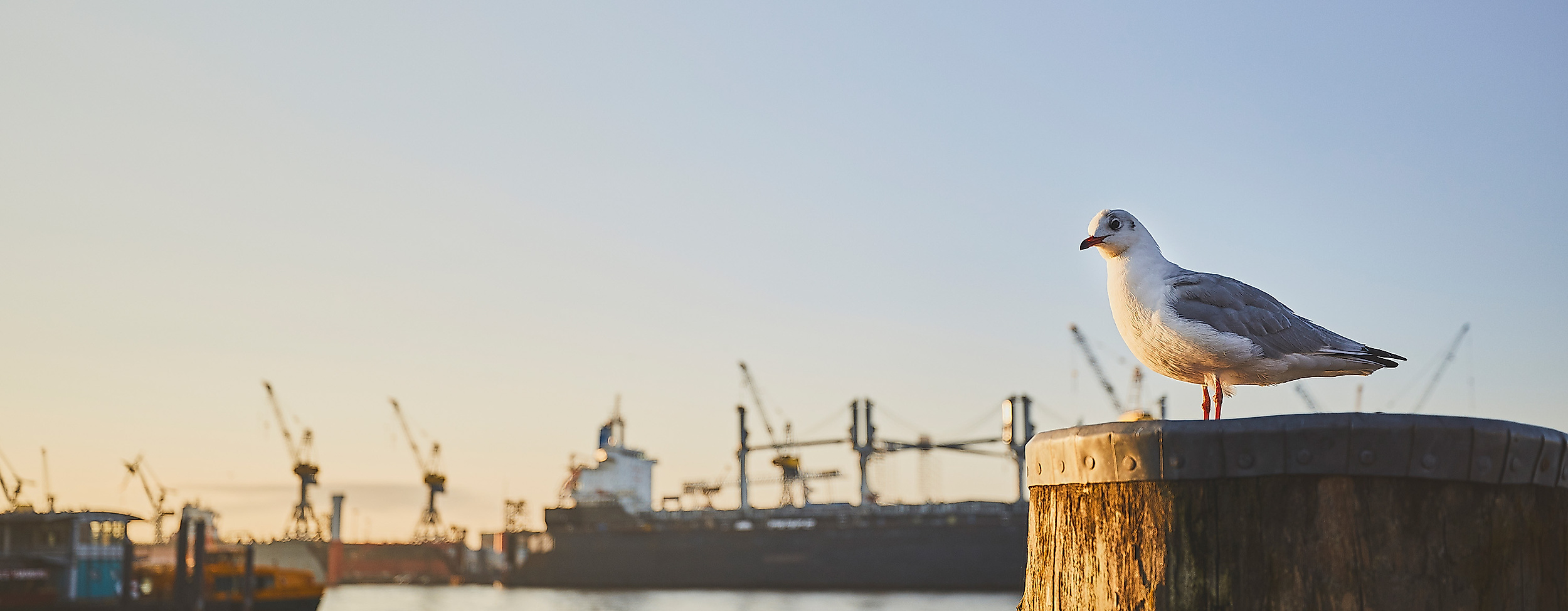
Centrally located in the port of Hamburg, the Landungsbrücken are a good starting point to get an overview of the port. The Landungsbrücken are very busy both on land and on water. This is where various boat tours of the harbour and Speicherstadt start, where the regular ferries stop and where the musical visitors cross over to the concert halls. It's an ideal place to go on board and let yourself be sailed along the Elbe. On the port side - i.e. to the left - of the Landungsbrücken, the Elbphilharmonie proudly 110 metres above Hamburg harbour. If you take the curved escalators or the lift to the plaza, Hamburg and its harbour lie at your feet with this breathtaking view.
You always come back to Hamburg
Just before the giant concert hall, a small corner juts inconspicuously into the Elbe - the Kehrwiederspitze. Romantics say that it was from here that sailors were waved to as they sailed from their home port - always, of course, with a waving handkerchief and the request "come back" - in German "Kehre wieder". Realists, on the other hand, believe that "Kehrwieder" is simply the North German word for "dead-end street", which only ended here with the construction of the Niederbaumbrücke bridge in 1880. Regardless of which version you believe: behind Kehrwiederspitze and Elphi - as Hamburgers call lovely their secret landmark - new and old meet in HafenCity and Speicherstadt.
The youngest part of the Hanseatic City
Hamburg's HafenCity is a major project that has become home to many Hamburgers in recent years. Here it is wonderful to stroll through the long avenues and - yes, we admit it - sometimes it is more of a push. When the weather is nice, you can relax on the Magellan Terraces, preferably with a coffee in one of the numerous cafés on the Sandtorkai and Brooktorkai waterfronts. Here you can watch the ships in the distance and let the harbour wind blow around your nose. Another must-see in HafenCity is the Miniatur Wunderland, the world's largest model railway. And those who want to get to the bottom of maritime history and culture will get their money's worth at the International Maritime Museum.
The Speicherstadt is history, culture and architecture all in one
HafenCity and Speicherstadt merge seamlessly. The typical red brick architecture of the Speicherstadt was built at the beginning of the 19th century during the bloming time of trade. The "Miracle of Hamburg", once the largest warehouse complex in the world, is inextricably linked to the city's history and has been a UNESCO World Heritage Site since 2015. If you want to learn more about it, we recommend the Speicherstadt Museum. For a sweet break, visit the Chocoversum right next to the Chilehaus in the Kontorhaus district on the edge of Speicherstadt, and if you want to soak up the unique ambience, stroll right along the Kehrwiederfleet. The boat tours of the Speicherstadt also start from here. Please note: they depend on the tide.
Giraffe cranes and containers from all over the world
We head back to the Landungsbrücken and look straight ahead across the Elbe: there are the musical theatres for The Lion King and The Ice Queen. Next to and behind them is everything else that happens in Europe's third largest port: Containers are unloaded, loaded, transhipped and stored here, the cruise terminals are located here, ships are built and repaired here and parts of the port administration and operations are located here.
Under and alongside the Elbe
After backboard comes starboard: to the right of the Landungsbrücken, the tunnel runs deep under the Elbe. The Old Elbe Tunnel is open to pedestrians and cyclists and is worth a visit in itself. From the other side, you have a wonderful view of the hustle and bustle at the hectic Landungsbrücken. It doesn't take much luck to get a decent fish sandwich here. But now it's back to the other side and towards the North Sea. Always along the banks of the Elbe, the path leads us to Hamburg's fish market. This is where night owls and early risers meet every Sunday morning. We continue past a few cafés, pubs and fish restaurants to the Cruise Center Altona. The latter is one of the cruise terminals in the port and serves as a mooring point for cruise ships.
From the Elbe beach to Altona
We continue unnoticed through the new Elbe tunnel to the museum harbour Övelgönne. Several historic ships are moored here. Right next to it begins the Elbe beach where, depending on the season, you can bury your feet in the sand or let the wind blow around your nose - on many days even both. Hamburg's beautiful city beach ends the harbour area in the southwest of the city. From the Elbe beach, a steep staircase leads up to Övelgönne Street, where many restored captain's houses stand. They traditionally served the captains and seamen as long as their ships were in port. Today they have been lavishly restored and most have retained their characteristic charm.
Finally, a view from the Altona balcony
Whether at the end or as a start for exploring the harbour, from the Altona Balcony you can overlook a large part of the harbour. Anyone who has made the ascent from the Elbe and is walking along the Elbchaussee towards the city centre cannot miss this beautiful viewing platform. A very popular place with locals and tourists alike. From here you can also see the Köhlbrand Bridge, which connects the two banks of the Elbe and links the southern districts of Veddel and Wilhelmsburg to the city.
